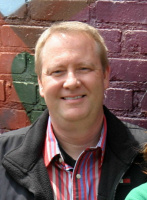 The Amityville murders took place in 1974. A son in the Defeo family killed his parents and four siblings. Thirteen months later a new family moved into the Dutch Colonial house where the deed occurred. Twenty-eight days later they were forced to abandon that home in a suburban neighborhood on the south shore of Long Island, New York, "to an unnatural evil" they felt threatening them. A year later author Jay Anson chronicled their ordeal. His book became a runaway bestseller in 1977 (about 10 million copies) and was turned into an indie film horror movie that grossed over $80 million. It was re-made in 2005.
The Amityville murders took place in 1974. A son in the Defeo family killed his parents and four siblings. Thirteen months later a new family moved into the Dutch Colonial house where the deed occurred. Twenty-eight days later they were forced to abandon that home in a suburban neighborhood on the south shore of Long Island, New York, "to an unnatural evil" they felt threatening them. A year later author Jay Anson chronicled their ordeal. His book became a runaway bestseller in 1977 (about 10 million copies) and was turned into an indie film horror movie that grossed over $80 million. It was re-made in 2005. The basis for the haunting of this house was the idea that it was built on a site where the local Shinnecock Indians abandoned their mentally ill and sick, who then cursed the land as they lay a dying. In the movie this is glossed-over in favor of the fable that a witch named the "Reverend Jeremiah" Ketchum (Katch 'em, kill 'em) escaped from the Salem trials and built his house there, which included a torture chamber for Native Americans that was accessible under a basement stairwell (a red room, the gateway to hell). So the premise of the plot is a present haunting as a result of horrible sins of the past.
As with all good plots, the Bible originates this motif. In Exodus 20:5 and 34:7 Moses warns Israel that in the case of exceptional and demonic sins (like idolatry), God will visit "the iniquity of the fathers upon the children unto the third and fourth generation of them that hate me." What is the nature of this "visitation?" There is much discussion about what these words mean. But it is clear that they mean something.
D.H. Lawrence made some penetrating comments on James Fenimore Cooper's "White Novels" (Cooper authored The Last of the Mohicans). Lawrence makes an observation to the effect that "the Red Indian" will never possess the broad lands of America, but his ghost will.
Interesting. Here is what Lawrence says: "The Red Man . . . is dead and unappeased. Do not imagine him happy in his Happy Hunting Ground. No. Only those that die in belief die happy. Those that are pushed out of life in chagrin come back unappeased, for revenge." Then he offers this prescient insight on pathological modern American psychology. "At present the demon of the place and the unappeased ghosts of the dead Indians act within the unconscious or under-conscious soul of the white American, causing the great American grouch, the Orestes-like frenzy of restlessness in the Yankee soul, the inner malaise which amounts almost to madness, sometimes."
Sometimes. A Korean-born American student snuffed out 32 lives at Virginia Tech (my used book proprietor, a man with whom I have done much business over the years, lost his niece). The massacre at VT was billed in the media as the largest mass-murder in American history. And yet a year before the Amityville murders an incident in Wounded Knee, SD, drew the nation's attention back two generations, to the 1890 military massacre there of over 153 Dakota Sioux. (It was described as a "massacre" by Gen. Nelson A. Miles in a letter to the Commissioner of Indian Affairs, March 13, 1917. The U.S. soldiers numbered 500, the Indians numbered 350, and all but about 120 were women and children. Over twenty soldiers were awarded the Medal of Honor.) L. Frank Baum (better-known as author of The Wonderful Wizard of Oz) was a young newspaper editor at the time, and wrote in an editorial that he had "before declared that our only safety depends upon the total extermination of the Indians. Having wronged them for centuries, we had better, in order to protect our civilization, follow it up by one more wrong and wipe these untamed and untamable creatures from the face of the earth. In this lies future safety for our settlers . . .".
Virginia Tech. Is it the largest mass-murder in American history? Or is it a visiting of the sins of fathers—sins of racism, covetousness and xenophobia—upon the children of the third generation? Are we haunted by the ghosts of political forefathers who, like Ahab, coveted Naboth's vineyard and, having wronged Naboth for so long, followed it with a final wrong to wipe him out and take his vineyard in safety (1 Kings 21)? How can we reverse this curse, stop the haunting, get out of Amityville, move off Ocean Avenue (or 1313 Mockingbird Lane if you are a child of the Munsters from back in the day)?
And shewing mercy unto thousands of them that love me, and keep my commandments, Exodus 20:6.
Keeping mercy for thousands, forgiving iniquity and transgression and sin, Exodus 34:7.
If, as N.T. Wright has blogged for Newsweek, "Forgiveness means you were wrong" (http://newsweek.washingtonpost.com/onfaith/nicholas_t_wright/2007/04/forgiveness_means_you_were_wro.html), then getting forgiveness means acknowledging to God you were wrong. We cannot correct the culture. But each of us can come correct ourselves, reversing the curse with repentance, and stop passing on to our children's children the ghost of sin's past.

No comments:
Post a Comment